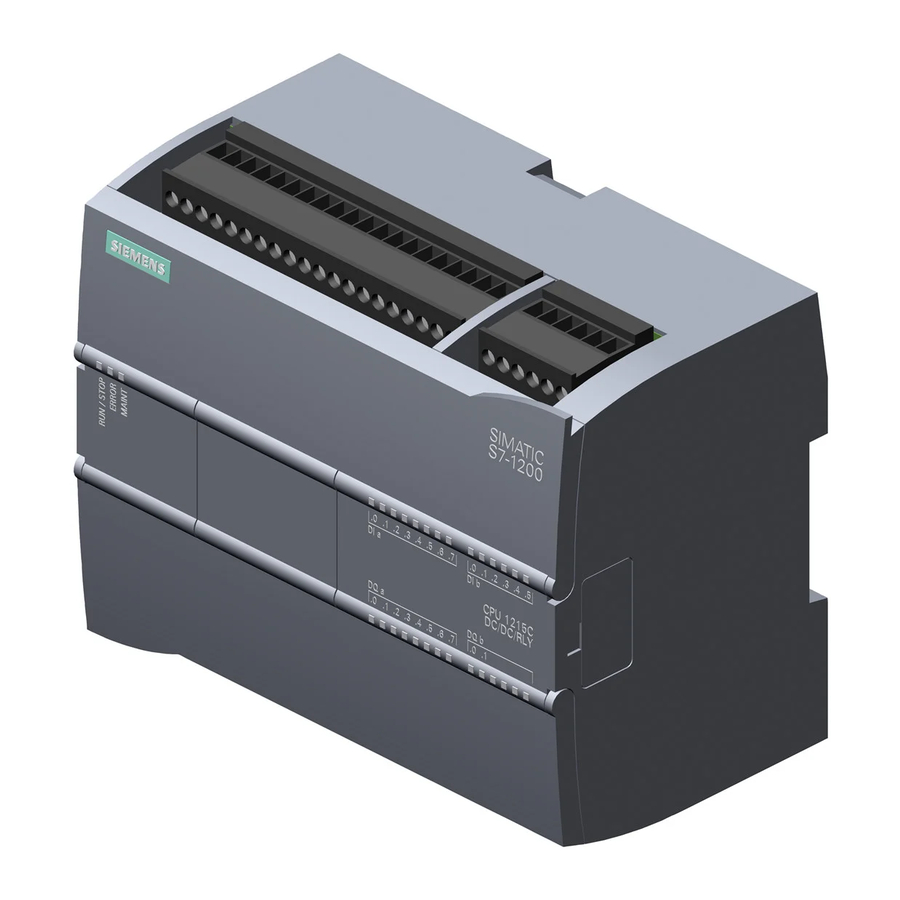Siemens SIMATIC S7-1200 안전 프로그래밍 매뉴얼 - 페이지 14
{카테고리_이름} Siemens SIMATIC S7-1200에 대한 안전 프로그래밍 매뉴얼을 온라인으로 검색하거나 PDF를 다운로드하세요. Siemens SIMATIC S7-1200 48 페이지. Controlling several fans (ebm-papst) via modbus rtu
Siemens SIMATIC S7-1200에 대해서도 마찬가지입니다: 매뉴얼 (30 페이지), 사용 설명서 (36 페이지), 매뉴얼 (40 페이지), 매뉴얼 (17 페이지), 매뉴얼 (31 페이지), 매뉴얼 (49 페이지), 매뉴얼 (20 페이지)

3 Methods for Safety Programming
Methods for Safety Programming
3
3.1
Program structures
3.1.1
Defining a program structure
Recommendation
Modularly divide the program code, e.g.,
–
into subparts for detecting, evaluating, reacting or
–
plant sections.
In the preliminary stages, create a specification for each module (based on the
risk assessment requirements).
Avoid complex signal paths.
Advantages
Minimizes complexity.
Reduces programming errors.
Allows the program code to be analyzed/tested without running the program
(e.g., code review or PLCSIM).
Easily expandable. Simplifies renewed acceptance.
Reuse of program parts without renewed acceptance.
Allows advance testing and acceptance of finished program parts.
Example
The following figure shows a safety application that is divided into three machine
areas (safety zones).
As some of the sensor signals are interconnected across areas (e.g., emergency
stop functions that act globally), they are grouped into a "Sensors" FB (they could
also be split up into physical or logical areas). The respective sensors are
evaluated using standardized function blocks (e.g., "GuardDoor").
The Mobile Panels' blocks are also called here.
Separate logic and actuator FBs are created for each machine area. The actuators
are controlled using standardized function blocks (e.g., "ContactorControl").
Safety Programming Guideline
Entry ID: 109750255,
V1.0,
10/2017
14
